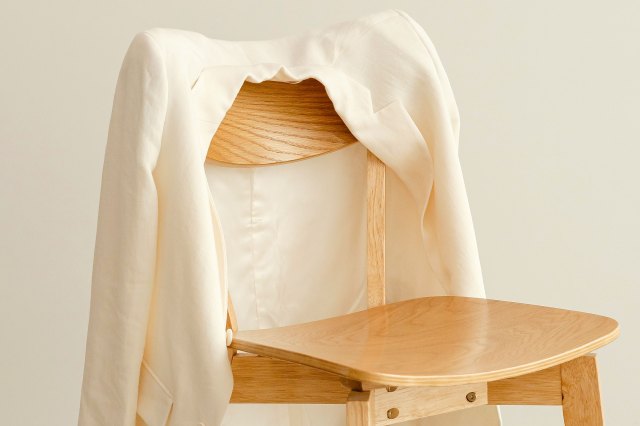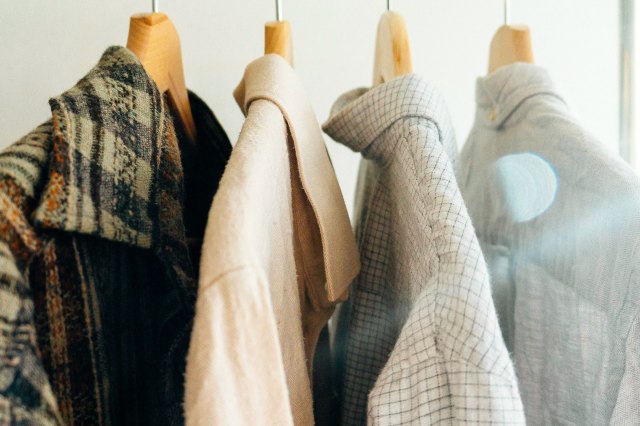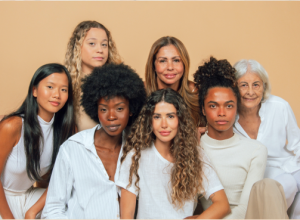Between what we see on television and in film, the narratives pushed by magazines and blogs, and our collective ideals of what’s “en vogue” or not, there are countless ways to define what it means to be fashionable. Ultimately, though, style is less about what you wear, and more about how you wear it, how it makes you feel, and how you inspire those around you.
Think of style as a state of mind rather than a quality achieved by strict adherence to predetermined guidelines. More often than not, when we break away from these preconceived notions of what’s “fashionable,” we find our best, most authentic selves. And what’s more en vogue than feeling good about yourself inside and out? With that in mind, here are 10 style rules you can — and should — break to your heart’s content.

Don’t Wear White After Labor Day
Not only is this age-old rule nonsensical and limiting — who doesn’t love a chic winter white ensemble? — but it also may be a little classist. Although the exact origins of the edict are the subject of some debate, one theory suggests it came about in the late 19th and early 20th centuries, when wealthy folks adopted white clothing (which was expensive to launder) as resort wear on vacation. There’s also speculation that old-money elites created the rule to separate themselves from the nouveau riche. In any case, it’s now acceptable to wear white in every season.

Don’t Mix Black With Other Dark Neutrals
Combining black with other dark shades such as navy and brown has long been frowned upon, but this is another rule better left in the past. Mixing and matching dark neutrals is a great way to break up a monochromatic outfit in a sleek, elegant way. Just make sure the differing tones are easy to distinguish — your navy should be obviously blue, your brown should be a warm earth tone, and so on. Otherwise, you run the risk of looking like your whole outfit is black with varying degrees of fading and discoloration.

Don’t Match Your Colors Perfectly
Speaking of colors, whoever said you shouldn’t match your outfit too closely has clearly never experienced the power of a monochromatic, color-blocked ensemble. Not only do monochromatic outfits look effortlessly put together, but they’re also a fun way to pay homage to your favorite hue. Opt for a stunning all-black (or all-white) look, or experiment with vivid jewel tones such as emerald green, sapphire blue, or ruby red. Color blocking makes a big impact with relatively little effort — a win-win.

Don’t Mix and Match Different Patterns
One more word on prints and colors, and then we’ll rest our case: Don’t be afraid to mix and match prints. Tired, old-fashioned rules deem this tacky, but we call it eclectic. The key here is to be deliberate with your pattern choices. Opt for different textures, like a silk top and corduroy bottoms, or prints that share similar motifs or complementary colors. Choosing different pattern sizes also can help turn an outfit once deemed too busy into something terrific.

Don’t Wear Fake Leather or Fur
Gone are the days of 1980s pleather and cheap fake fur. In the 21st century, faux fur and leather are indistinguishable from their real counterparts. Whether you’re interested in keeping a cruelty-free closet or simply looking for a lower price tag, synthetic alternatives are a great way to go. You’ll look like a million bucks without spending a million bucks.

Never Repeat an Outfit
When it comes to repeating outfits, we believe in the old adage, “If it ain’t broke, don’t fix it.” Finding an outfit that makes you feel good can be hard enough as it is, so why shouldn’t you recycle a look that you already love? Plus, constantly buying new clothes to avoid being seen in the same thing twice isn’t great for the environment or your bank account.

Certain Clothes Only Work on Certain Body Types
There are no specific style requirements for height or weight. Whether you’re tall and want to wear heels, short and want to wear a long skirt, slender and want to wear oversized clothes, or curvy and want to wear a midriff-exposing top, all that’s required for you to do so is to put the clothes on. That’s it. There is no one ideal body; thus, there is no one perfect outfit for that body.

Always Buy the Smaller Size
In that same vein, don’t worry about the size on the label — instead, focus on the fit. Obsessing over something as finicky as a garment’s numerical value is a byproduct of modern culture’s fixation on weight and body measurements, and no one needs that energy in their life. Sizes vary from brand to brand, and even within the same brand, so don’t be afraid to size up or down from where you think you should be. The number on the label does not correlate to your self-worth.

Dress Your Age
Style has no age restriction in the same way that it has no height or weight restriction. You don’t have to give up fun patterns or silhouettes once you hit a certain age; nor do you have to wait to wear certain things for fear of looking too “matronly.” Dress in clothes that make you feel like your best self, period.

Always Follow the Latest Trends
While you’re certainly allowed to follow each new fashion trend as it arises, doing so isn’t a requirement to be stylish. If you’ve found clothes that work for your personality, aesthetic, and lifestyle, you don’t have to give them up just because something else is considered “in.” Chances are, what’s out of style today will be back en vogue in a few years. So, really, maintaining your personal style through all the fads is the best way to stay on top of trends.
This article is for general informational purposes only.
Affiliate Disclaimer Medical Disclaimer








 Unique Beauty is free for all users.
Unique Beauty is free for all users.